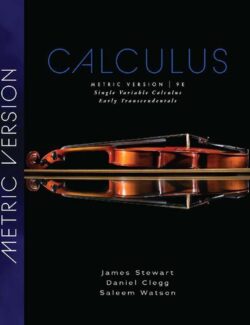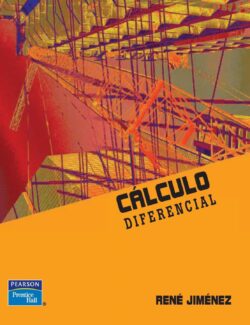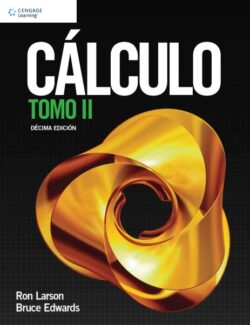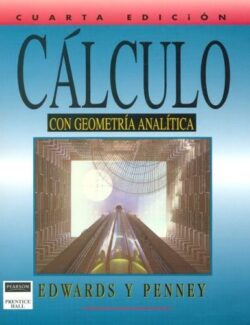Descripción
Cálculo de Una Variable: Trascendentes Tempranas” de James Stewart es una obra esencial en el estudio del cálculo que guía a los estudiantes a través de los principios fundamentales de una variable. Con su enfoque claro y didáctico, Stewart hace que los conceptos matemáticos sean accesibles y aplicables. La serie Cálculo métrico de James Stewart es la más vendida del mundo por su enfoque en la resolución de problemas, su precisión y exactitud matemáticas y sus extraordinarios ejemplos y conjuntos de problemas. Seleccionados y asesorados por Stewart, Daniel Clegg y Saleem Watson continúan su legado y sus cuidadosos perfeccionamientos conservan la claridad expositiva de Stewart y hacen de la novena edición una herramienta de aprendizaje aún más utilizable.
SINGLE VARIABLE CALCULUS: EARLY TRANSCENDENTALS, Metric, 9th Edition, le proporciona la base más sólida para un futuro como ingeniero. El libro abarca una amplia gama de temas, desde funciones y límites hasta derivadas e integrales. Stewart utiliza una progresión lógica que permite a los estudiantes construir su comprensión paso a paso. Además, la introducción temprana de las funciones trascendentales agrega una capa de complejidad y profundidad al estudio.
El solucionario que lo acompaña se convierte en una herramienta útil que le ayudará en el aprendizaje de la materia, y los recursos como los cursos de aprendizaje interactivo que tenemos en nuestro sitio web harán que aprender Cálculo sea algo cada vez más práctico, el enfoque de Stewart y los recursos de elsolucionario.org mejoran la comprensión y aumentan la confianza de millones de estudiantes en todo el mundo.
Una característica destacada es la atención de Stewart a la resolución de problemas del mundo real. Numerosos ejemplos y aplicaciones prácticas ilustran cómo los conceptos matemáticos se utilizan en situaciones cotidianas y en diversas disciplinas, desde la física hasta la economía.













Déjanos un comentario
No hay comentarios